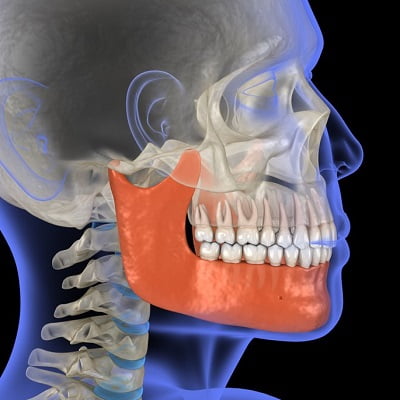
Many people struggle to properly chew their food and have misaligned jaws, which detracts from their facial looks. But there’s no need to worry anymore. Advanced cosmetic treatments can fix such issues with jaw surgery. All you need to do is visit Skn Cosmetic Clinic and discuss everything about Jaw Surgery: Types, Techniques, Risks, and Rehabilitation.
In this blog post, you will learn about the basics of jaw surgery including its types, techniques and many more. So, take a moment and read the following information carefully.
An Overview – Jaw Surgery:
Jaw surgery or orthognathic surgery is a type of surgical procedure that corrects abnormalities of the jaw bones and realigns the jaws to improve the function of the mouth and teeth. It may be performed for a variety of reasons, including congenital abnormalities, or injury, and to correct problems with the jaw caused by teeth misalignment.
It can involve moving the upper jaw, lower jaw, or both, and may also involve the repositioning of the chin. It is typically performed by an oral and maxillofacial surgeon, who is a specialist in surgery of the mouth, face, and jaw.
Different Types:
There are several different types of jaw surgery that can be performed, depending on the specific problem being corrected. Some common types of jaw surgery include:
- Le Fort I osteotomy – to move the upper jaw and reposition it to correct an overbite.
- Le Fort II osteotomy – move the upper jaw and reposition it to correct an underbite.
- Mandibular osteotomy – to move the lower jaw and reposition it to correct an overbite.
- Bimaxillary osteotomy – involves both the upper and lower jaws to correct an overbite or underbite.
- Genioplasty – this procedure involves repositioning the chin to improve the balance of the face.
- Orthognathic surgery – refers to any type of jaw surgery that is performed to correct a problem with the jaw or bite.
A Note To Remember – Each type of jaw surgery is tailored to the specific needs of the candidate and the appropriate procedure will depend on the specific problem being corrected.
What Techniques Are Used In The Procedure?
Jaw surgery can be performed using a variety of techniques, depending on the specific procedure being performed and the needs of the patient. Some common techniques that may be used during jaw surgery include:
- Osteotomy: This technique involves cutting the jaw bone to reposition it. The bone may be cut in a straight line, or it may be cut in a curved or angled shape to allow for proper realignment.
- Bone grafting: This technique involves using bone from another part of the body, or a synthetic bone substitute, to fill in areas where the jaw bone has been removed or reshaped.
- Plate and screw fixation: This technique involves using metal plates and screws to hold the jaw bone in place while it heals.
Rehabilitation Of Surgery:
Rehabilitation after jaw surgery is an important part of the recovery process, and it typically involves a combination of physical therapy and at-home care. Here are some tips for rehabilitating after jaw surgery:
- Follow your surgeon’s instructions for post-surgery care. This may include taking medications as prescribed, keeping the incision site clean, and avoiding certain activities.
- Eat a soft, nutritious diet. You may need to stick to a liquid or pureed diet for a few weeks after surgery, gradually progressing to soft foods as your jaw heals.
- Practice gentle jaw exercises. Your surgeon or physical therapist can recommend specific exercises to help strengthen your jaw muscles and improve your range of motion.
- Avoid strenuous activity. It’s important to avoid activities that could strain your jaw or cause bleeding or swelling, such as lifting heavy objects or playing contact sports.
Are There Any Risks?
Every surgical procedure has some risks and side effects. They can subside or can easily be handled if a person follows the surgeon’s instructions. Otherwise, you may experience different types of complications. Anyhow, some common risks of this surgery are mentioned below
● Pain.
● Swelling.
● Unable to chew food.
● Numbness.
● The difficulty in opening the mouth.
● Minor scarring.
A Note From SKN Cosmetic Clinic!
Therefore, it is a delicate surgery that can be performed by experienced surgeons. If you want to know more about Jaw Surgery, you can speak to us anytime. Our expert surgeons will guide you properly and give you better recommendations according to your issue.







Book your Appointment